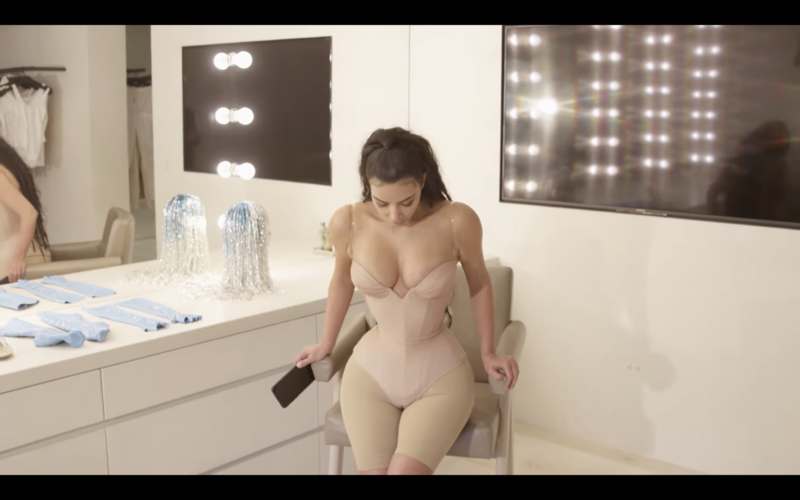
Waist training. We’ve all heard about it, but what is it really?
Some sources — such as LiveStrong and Refinery29 — agree that it’s the process of wearing a corset-like garment that cinches the waist and slims the figure over time ,resulting in that coveted hourglass shape (think Beyoncé and the Kardashians). But when Vox talked to San Francisco's Autumn Adamme, the owner of Dark Garden Corsetry & Couture and one of the world's leading corset makers, she clarified the definition by saying what waist training isn’t.
Although waist training and corseting are used interchangeably, Adamme emphasized that while they are related, they are "not at all the same thing." As she explained, "waist training is about gradually reducing the natural waist size," while corsets are "more commonly used for costuming or to wear for fun."
For the purposes of this article, we're using the terms interchangeably with the understanding that occasionally wearing a corset doesn't automatically mean you're actively waist training. Below, we break down the history of waist training, modern-day examples of it within the pop culture sphere, and how it affects the body. (Spoiler alert: It's probably best not to follow Kim K's example.)
Where did waist training come from?
The history of corsets is complicated. The University of West Virginia’s historical exhibit shows the corset as most popular during the reign of Queen Elizabeth as a symbol of the aristocracy, but once the French Revolution happened, many gave up the trend in exchange for looser garments that represented liberation. In other words, people wanted to be free!
Since the 1800s, physicians have objected to corsets.
I mean, can you blame them? Corsets can cause all sorts of health risks like the constriction of breathing and the shifting of organs. According to the Royal College of Surgeons, "Corsets were an integral part of women’s clothing (and some men’s) from the 16th century until early in the 19th. Practically compulsory for women of aristocratic birth, corsets were also adopted by working women aspiring to a fashionable silhouette."
Corsets have literally never been comfortable.
As the Royal College of Surgeons explains, corsets back in the day were typically made from "a stout fabric, with bone or metal inserts." In 1828, metal eyelets for corset lacing were introduced in France, which allowed the waist to be even more tightly constricted, "sometimes as far as 17 inches." Now is it just me, or does that sound downright painful?
So, how did corsets — and the idea of waist training — become popular in the present-day 21st century?
Well, simply put: They came back into popularity because of the common desire for the hourglass shape that many celebs and influencers embody and promote. From the Kardashians to Nicki Minaj to Snooki, many public figures have spoken out about their frequent use of waist trainers. The Kardashians even have a go-to brand: Waist Gang Society.
Let's not forget how Kim K recently made waves with her itty bitty waist at the 2019 Met Gala.
When she walked the pink carpet at the big event, many people were shocked and concerned by the super small appearance of her waist. Some even speculated that she had undergone surgery in order to get the appearance of a barely detectable midsection. Although that wasn't the case, she did have to get strapped into an insane corset.
The whole process required an entire team and took hours.

As we see in Vogue's behind-the-scenes video of Kardashian's Met Gala prep, the reality TV star had trouble sitting down once she was laced into that corset. "Anna, if I don’t sit down for dinner, now you know why,” she said slowly, struggling to lower herself into the seat.
So now you're telling me I can't even sit properly in one of these things?! Um, hard pass.
Kardashian also had to take breathing lessons to wear the corset in question.
Besides needing an entire crew to help squeeze her into that corset and dress, she also had to learn how to breathe properly so she wouldn't, y'know, die on the red carpet.
On Instagram, she said: "7 months in the making and fittings in Montreal, Paris and LA. Corset breathing lessons from none other than Mr. Pearl. It was worth it all!!! And this was the start of a magical inspiring connection. Stay tuned for more."
By this point you may be wondering: Does waist training even work?
That depends on who you ask. There are certainly many celebs and influencers — especially on the 'gram — who will try to convince you that it does. But their opinion should be taken as lightly as possible. The reality is that there’s no proof or evidence that they do or don’t work. But the chances for improper use of corsets to waist train are high, especially if you don’t do your research.
Knowing the health risks associated with waist training is crucial.
Gina Sam, a gastroenterologist and Director of the Gastrointestinal Motility Center at the Mount Sinai Hospital in New York, told Business Insider that the most common side effects of wearing a corset or waist trainer too tight are “shortness of breath, nausea, fainting, and bruising." And those are just some of the most common side effects. We're not even talking about the potential damage the process could have on internal organs in the long run.
Still interested in waist training?
Our best advice is to proceed with caution. In addition to the potential side effects, waist training simply doesn’t produce sustainable results — definitely not without living an otherwise healthy lifestyle. The cold, hard facts are that when you finally take that corset off, your body is going to eventually return to its original state.
When it comes to waist training, people need to understand that it's definitely a case of risk vs. reward. Think through the possible negative effects on both your physical and mental health, and decide if the (short-term) upsides are really worth it.




